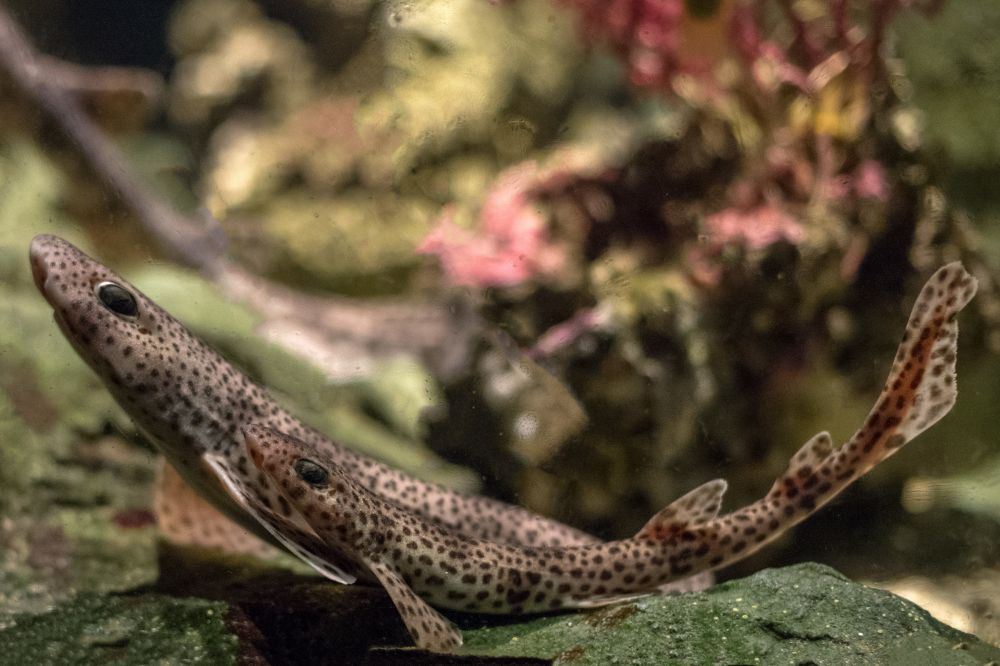
Read the article with FishingTheSpot: the lesser spotted dogfish
Keep an eye on this subject!
Thousands of species spotlights and techniques but also all the local information about your city!



Meet other anglers near you and share your fishing fishing trips, afoot or on a boat, at sea or in freshwater
See the fishing tripsThe Lesser Spotted Dogfish

in Winter
No restriction
Did you fish
this species this month?
The Lesser Spotted Dogfish belongs to the Scyliorhinidae. It has a height of about 80 cm in length and a maximum weight of 5 kg. It can live up to 8 years. It breeds from November to July. The female lays about a hundred eggs. It is fished in winter.
The lesser spotted dogfish is a small spotted shark with a rounded snout. The spots are small, numerous, brown to blackish-brown on a light beige to red background, the belly remains light. Five gill slits are located just behind the black and oval eyes. As with all species of the Scyliorhinidae family, the first dorsal fin D1 is located behind the pelvic fins; the second dorsal fin D2 is located just behind the anal fin. The distance between the 2 dorsal fins D1 and D2 is greater than the length of the base of the anal fin. The nasal valves are contiguous.
The Lesser Spotted Dogfish lifestyle
The Lesser Spotted Dogfish is active at night. Its diet is very varied. It feeds on mollusks: gastropods (whelk or whelk is the most common prey observed in the stomach, but also abalone), also lamellibranches (clams, knives) and also cephalopods (young cuttlefish). It also eats small crustaceans (small crabs, shrimps and langoustines), worms (Polychaeta). Finally, it eats not only small benthic fish (gurnards, flounder, gobies) but also fish less dependent on the bottom (whiting, tackles) and even pelagic species (sardines, herring, horse mackerel, mackerel...).
Sexual maturity varies between 54 to 60 cm in height in the Atlantic and 40 to 45 cm in the Mediterranean. At the end of summer, the adults reach deeper waters. During mating, the female is elongated and almost motionless; the male wraps himself around her by pushing his pterygopods (pelvic fins transformed into a coupling organ) into his cloaca. The species is oviparous. Large females lay up to about 100 eggs; this number is lower in females that have recently reached sexual maturity. Eggs are laid in pairs, on average twice a month from November to July. These rectangular eggs, about 6 cm by 2 cm in size, have long twisted filaments at the 4 corners. During egg laying, the female shaves the bottom. The filaments coming out of the belly are twisted on algae, gorgonians or rocks. As the female continues her journey, the eggs attached to the bottom substrate are pulled from her belly. These eggs are commonly referred to as "mermaid bags" when they are found in sea leashes.
The incubation time varies with temperature; this time increases as the temperature decreases. In the Atlantic, eggs laid in May hatch less than 95 to 120 days later, while in the Mediterranean, eggs laid in late autumn take up to 285 days to hatch. At the time of hatching, the egg shell ruptures under the influence of the secretion of a gland that the larvae have on the forehead. When they hatch, the baby dogfish are 10 cm long. They are autonomous and benthic.
The Lesser Spotted Dogfish habitat
The Lesser Spotted Dogfish lives on soft bottoms of sand, gravel or mud, at a depth of 20 to 400 meters.
This shark can be found from Norway to the Senegalese coast, through the British Isles and into the Mediterranean.
The Lesser Spotted Dogfish Angling
It is caught in bottom trawl. It can also be fished with longlines, long lines on which hooks with bait hang along their entire length. The best appetizers for dogfish are: sandeel, soft crab, fresh taco, piece of fatty fish, bibi, white meat of bivalve and cephalopod.


